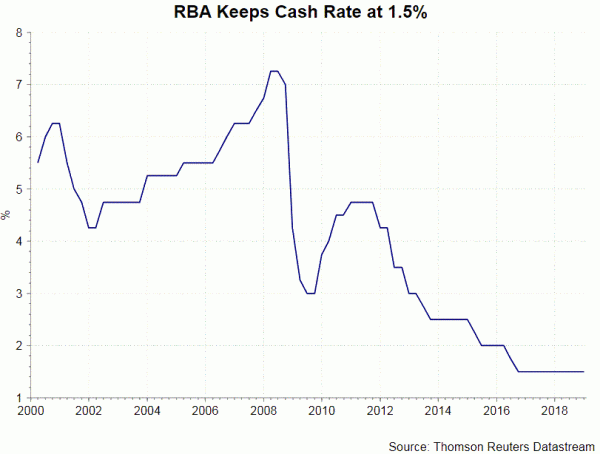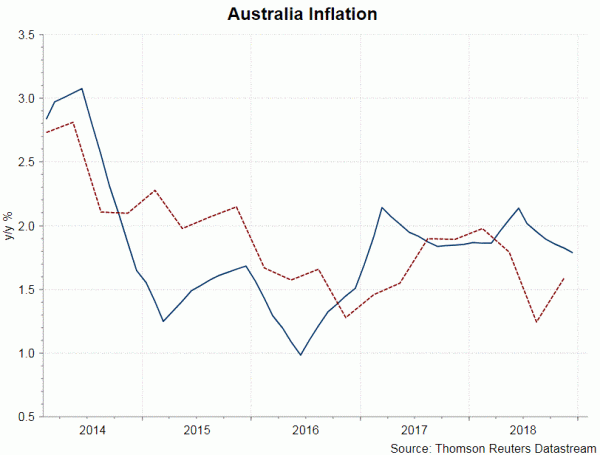As widely anticipated, RBA left the cash rate unchanged at 1.5% for the 27th consecutive meeting. Yet, it has turned less optimistic about Australia’s economic outlook while noting downside risks to global growth.
As suggested in the accompanying statement, the members indicated that “the central scenario is for the Australian economy to grow by around 3% this year and by a little less in 2020 due to slower growth in exports of resources”. This is compared with the December meeting when the central bank forecast growth to reach 3.5% “over this year and next, before slowing in 2020 due to slower growth in exports of resource”. Meanwhile, RBA did not describe the country’s economy as “performing well” this month.
One of the major concerns is weak household spending, which is believed to be the key drag on the third quarter GDP growth. While the members admitted that the sluggish household income growth has been dampening spending, they believed that income would “pick up and support household spending”. The stressed that “the main domestic uncertainty remains around the outlook for household spending and the effect of falling housing prices in some cities”.
It is likely that the RBA would downgrade the growth and inflation forecasts as it releases the Statement on Monetary Policy on Friday. In 4Q18, headline CPI eased to +1.8% y/y while core CPI improved to +1.6%. Both readings have been staying below the central bank’s +2% target. The phenomenon is the same in other countries, with the headline reading dragged by declining oil prices. Indeed, the members noted in the statement that global inflation has “moved lower due to the decline in oil prices, although core inflation has picked up in a number of economies”.
On the housing market, the RBA acknowledged that the property prices in Sydney and Melbourne are “going through a period of adjustment”, compared with December’s language that the prices “have continued to ease”.
Against the domestic and global economic backdrop, we expect the central bank would leave the policy rate unchanged for an extended period time.














